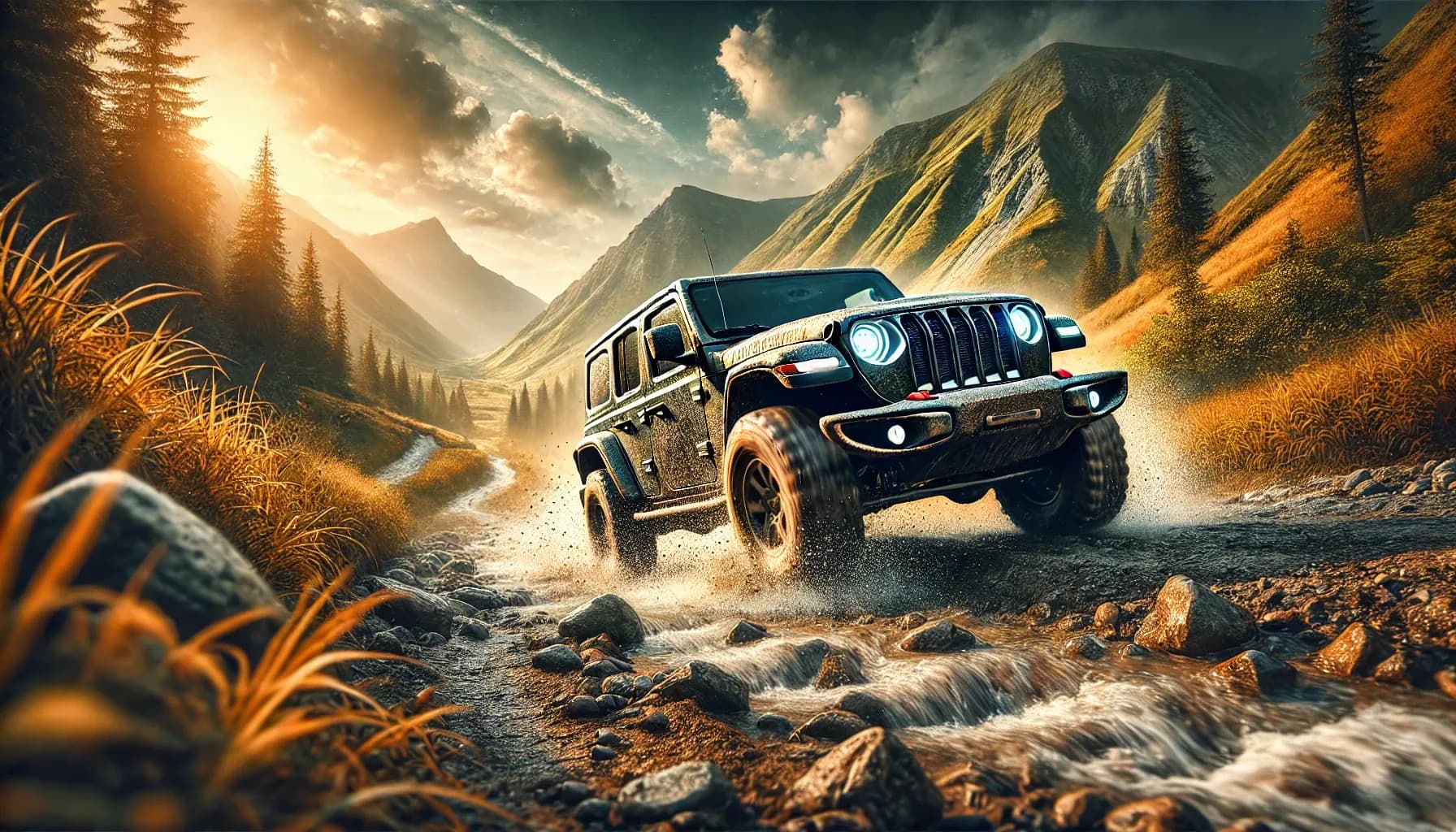
Date Published
Trailblazers: How Jeep Pioneered the Off-Road Lifestyle
From muddy trails to rocky mountain passes, the Jeep brand has become synonymous with adventure, exploration, and an off-road lifestyle that countless enthusiasts embrace around the world. But how did this iconic brand earn its legendary status? The answer lies in a storied history that dates back to World War II and continues to define the spirit of off-roading to this day.
Jeep's roots can be traced to the early 1940s, when the U.S. military sought a light reconnaissance vehicle suitable for rugged and unpredictable terrains. The design that would become the Willys MB ultimately won out, thanks to its durability, compact size, and incredible four-wheel-drive capabilities. The vehicle's simple, functional approach and fearless versatility would prove essential during the war, allowing soldiers to navigate forests, deserts, and mountain roads under extreme conditions. By the time WWII ended, this humble "General Purpose" vehicle—often rumored to be where the name "Jeep" came from—had cemented its place in automotive history.
The transition from military necessity to civilian ingenuity happened swiftly once the war was over. When servicemen returned home, many had grown fond of the practical and robust Willys MB. Recognizing its popularity, Willy's-Overland introduced the first "Civilian Jeep" (CJ) in 1945. The CJ models retained the original Jeep DNA—four-wheel-drive agility, impressive torque, and straightforward design—but they also introduced more comfort and functionality for everyday use. Farmers, ranchers, and outdoorsmen found the CJ invaluable for off-road chores, towing, and personal exploration. This new CJ line bridged the gap between utilitarian warfare vehicles and the recreational 4x4 we know today.
Throughout the 1950s and 1960s, Jeep continued to refine its off-road capabilities. Innovative features such as more advanced four-wheel-drive systems, stronger axles, and new body styles broadened Jeep's appeal. This era saw the birth of the iconic seven-slot grille, which would become an unmistakable trademark of the brand. As the Jeep lineup expanded, so did its influence on the developing off-road culture. People began customizing their vehicles with larger tires, lifted suspensions, and protective gear, transforming Jeeps into rolling statements of personal style and capability.
While Jeep's role in the expanding off-road scene gained momentum, it also inspired a new generation of enthusiasts to embrace the rugged outdoors. Off-roading grew beyond a fringe hobby into a dedicated lifestyle, complete with organized trail runs, off-road clubs, and specialized magazines. Jeep owners took pride in conquering rocky mountain passes and sandy dunes, pushing their 4x4s to the limit. These weekend warriors reveled in forging new paths, guided by the singular belief that a Jeep could take you anywhere you dared to go.
The Jeep brand carried its heritage forward into the late 20th century. The launch of the Jeep Wrangler in 1986 reinforced the company's standing as a trailblazer. Intended as a modern successor to the CJ lineup, the Wrangler was designed to perform in almost any condition—snow, rocks, mud, or sand—while retaining the timeless open-top configuration. Drivers could remove the doors and roof for an unfiltered connection to nature, truly elevating that "outdoor freedom" experience. With each new generation, Jeep refined the Wrangler to keep pace with modern safety standards and creature comforts, all while preserving its renowned off-road essence.
Jeep's influence on off-road culture extends beyond just the vehicles themselves. Over the decades, Jeep fostered a passionate community that epitomizes camaraderie and adventure. Whether it's the beloved "Jeep wave" between passing owners or the networking that takes place at annual Jeep jamborees, the brand's fans share stories, tips, and collective knowledge on everything from trail maps to suspension upgrades. This sense of belonging unites owners regardless of model year or modification level. The Jeep family truly embodies the off-road lifestyle, inspiring others to join in and explore nature's wildest territories.
Today, Jeep stands as more than just a line of off-road vehicles; it is a symbol of freedom, durability, and exploration. From the original Willy's MB that served soldiers in distant lands to the modern Wrangler tackling iconic trails like the Rubicon, the brand's legacy is built on pushing boundaries. Innovations such as advanced traction systems, better suspension geometry, and improved safety features continue to propel the Jeep lineup into the future. Jeep's unwavering commitment to off-road excellence has solidified its reputation as a pioneer in the automotive world—one that will forever be linked to the call of the wild.
In the ever-changing arena of adventure and exploration, Jeep remains a trailblazer that paved the way for the off-road lifestyle. Generations of enthusiasts have experienced the thrill of uncharted roads and endless horizons, thanks to Jeep's time-tested formula of rugged engineering and purposeful design. And as new models roll off the production line, each one carrying a heritage that dates back over 80 years, it's clear that Jeep's trailblazing spirit will continue to guide adventurers to new heights—wherever the dirt path takes them.
Related Articles
Modern Adventurers: Jeep's Evolution Through the Decades
From the Willys MB to the modern Wrangler, explore how Jeep has evolved while staying true to its adventurous roots.
From Battlefield to Backcountry: The Origins of the Jeep Legacy
The remarkable story of how a WWII military vehicle became an American icon and the foundation of adventure culture worldwide.